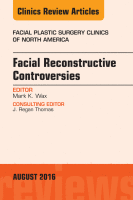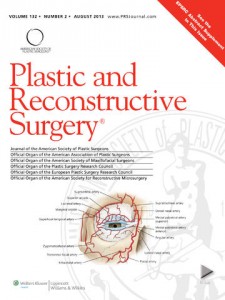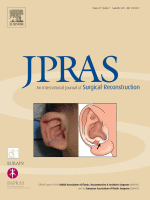Walsh Thomas, W; Bucky, L; Friedman, O.
Facial Plastic Surgery Clinics of North America, 2016-08-01, Volúmen 24, Número 3, Pages 379-389
 Nasal injectables and surface treatments alter the appearance of the nose both primarily and following nasal surgery. Fillers such as hyaluronic acids, calcium hydroxyapatite, and fat have a variety of advantages and disadvantages in eliminating small asymmetries postrhinoplasty. All nasal injectables have rare but severe ocular and cerebral ischemic complications. The injection of steroids following nasal reconstruction has a role in preventing supratip swelling and can improve the appearance of grafts to the nose. Resurfacing techniques reduce the appearance of autotransplanted grafts to the nose; there is little controversy about their benefit but surgeon preference for timing is varied.
Nasal injectables and surface treatments alter the appearance of the nose both primarily and following nasal surgery. Fillers such as hyaluronic acids, calcium hydroxyapatite, and fat have a variety of advantages and disadvantages in eliminating small asymmetries postrhinoplasty. All nasal injectables have rare but severe ocular and cerebral ischemic complications. The injection of steroids following nasal reconstruction has a role in preventing supratip swelling and can improve the appearance of grafts to the nose. Resurfacing techniques reduce the appearance of autotransplanted grafts to the nose; there is little controversy about their benefit but surgeon preference for timing is varied.
 Fat grafting is now widely used in plastic surgery. Long-term graft retention can be unpredictable. Fat grafts must obtain oxygen via diffusion until neovascularization occurs, so oxygen delivery may be the overarching variable in graft retention.
Fat grafting is now widely used in plastic surgery. Long-term graft retention can be unpredictable. Fat grafts must obtain oxygen via diffusion until neovascularization occurs, so oxygen delivery may be the overarching variable in graft retention. In March of 2013, the Executive Committee of the American Society of Plastic Surgeons approved an evidence-based guideline on breast reconstruction with expanders and implants, as developed by a guideline-specific work group commissioned by the society’s Health Policy Committee. The guideline addresses ten clinical questions: patient education, immediate versus delayed reconstruction, risk factors, radiation therapy, chemotherapy, hormonal therapy, antibiotic prophylaxis, acellular dermal matrix, monitoring for cancer recurrence, and oncologic outcomes associated with implant-based reconstruction.
In March of 2013, the Executive Committee of the American Society of Plastic Surgeons approved an evidence-based guideline on breast reconstruction with expanders and implants, as developed by a guideline-specific work group commissioned by the society’s Health Policy Committee. The guideline addresses ten clinical questions: patient education, immediate versus delayed reconstruction, risk factors, radiation therapy, chemotherapy, hormonal therapy, antibiotic prophylaxis, acellular dermal matrix, monitoring for cancer recurrence, and oncologic outcomes associated with implant-based reconstruction. Patient reported outcomes and quality of life following mastectomy are not well understood. This study evaluates the quality of life following surgery for breast cancer and compares outcomes following breast conserving surgery versus total mastectomy with or without reconstruction.
Patient reported outcomes and quality of life following mastectomy are not well understood. This study evaluates the quality of life following surgery for breast cancer and compares outcomes following breast conserving surgery versus total mastectomy with or without reconstruction.







 Sitio web publicado el
Sitio web publicado el
Los lectores comentan